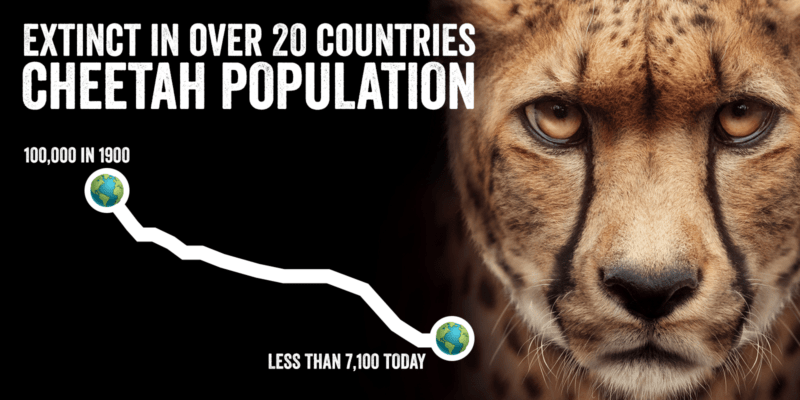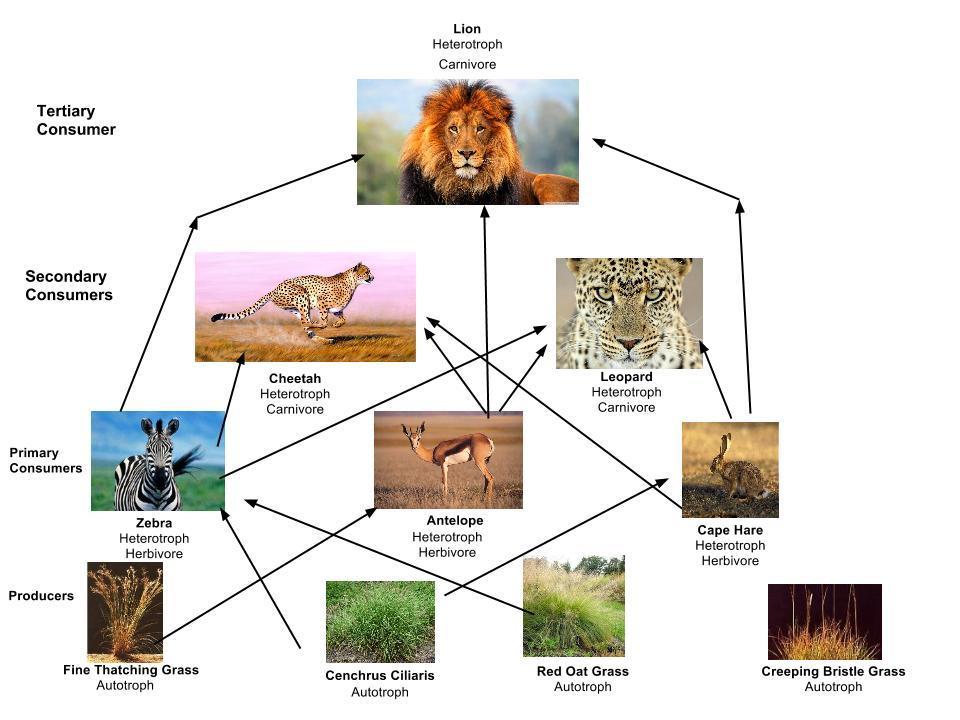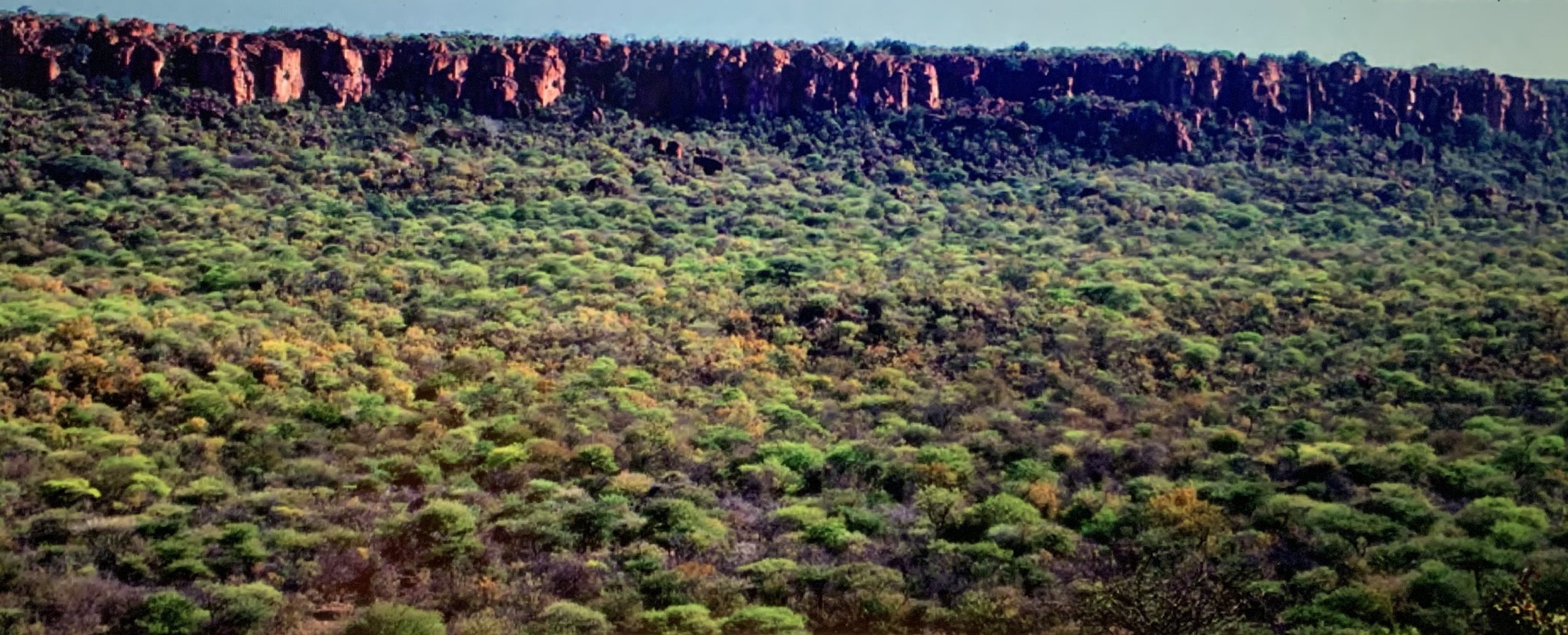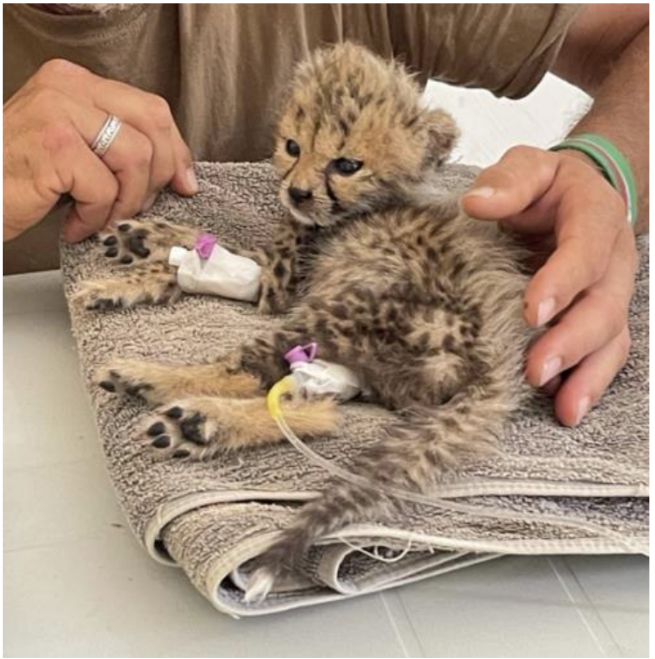Why Save The Cheetah from Extinction?

Because Apex Predators Balance the Ecosystem
Cheetahs live primarily in grasslands and benefit the ecosystem by keeping the animals it hunts at healthy populations. They typically hunt the weak and slowest of several species of animals.
If cheetahs no longer existed, there would be a domino effect referred to as a trophic cascade. There would be too many herbivores resulting in loss of vegetation, greater soil erosion, less available water, and a negative impact on the health of the ecosystem.
Cheetahs once ranged across nearly the entire African continent and into Asia from the Arabian Peninsula to eastern India. Today, cheetahs are found in only 23 per cent of their historic African range and are extinct in Asia except for a small population in Iran of about 50 individuals. In 2022, 8 cheetahs were relocated from Namibia to India in an attempt to reverse extinction there.
Why Are Cheetahs Threatened?
Human/Wildlife Conflict
Surprisingly, cheetahs do not fare well in protected areas like national parks and wildlife reserves. This is because these areas normally contain high densities of other larger predators like the lion, leopard, and hyena, all of which compete with cheetahs for prey. Given the opportunity, those other predators will also prey on cheetahs and cheetah cub mortality can be as high as 90%.
As a result, nearly 90 per cent of cheetahs in Africa live in open areas and on private farmlands and therefore often come into conflict with people. Cheetahs are killed in retaliation for livestock predation or because of their perceived threat to human livelihood.
Loss of Habitat
Cheetahs require vast expanses of land with suitable prey, water, and cover sources to survive. The cheetah’s movement across large areas of land depends on the availability of corridors and landscapes that are connected. As wild lands are destroyed and fragmented by human development and expansion, the cheetah’s available habitat is diminished. Numerous landscapes across Africa that once supported thousands of cheetahs now struggle with far fewer numbers.
Illegal Wildlife/Pet Trade
Cheetah trafficking in the Horn of Africa has reached crisis status. Each year an estimated 300 cubs are illegally snatched from the landscape, taken from their mothers to supply the illegal wildlife/pet trade.
Cheetahs Have a Narrow Gene Pool
About 12,000 years ago, a mass extinction occurred that eliminated 75 per cent of the world’s large mammal species. Fortunately, a handful of cheetahs managed to survive this extreme extinction event and were able to restore the world’s population of cheetahs.
This event caused an extreme reduction of the cheetah’s genetic diversity however, resulting in the physical homogeneity of today’s cheetahs. Poor sperm quality, focal palatine erosion, susceptibility to infectious diseases, and kinked tails characteristic of the majority of the world’s cheetahs are all ramifications of the low genetic diversity within the global cheetah population. In addition, cheetah do not breed well in captive setting and are susceptible to disease. One disease can wipe out an entire population.
How is Cheetah Conservation Fund Addressing These Threats?
We focus on the following programs:
Educational Programs / School Outreach
Livestock Guarding Dog Program
Learn more about these programs and help us to save the cheetah from extinction.


